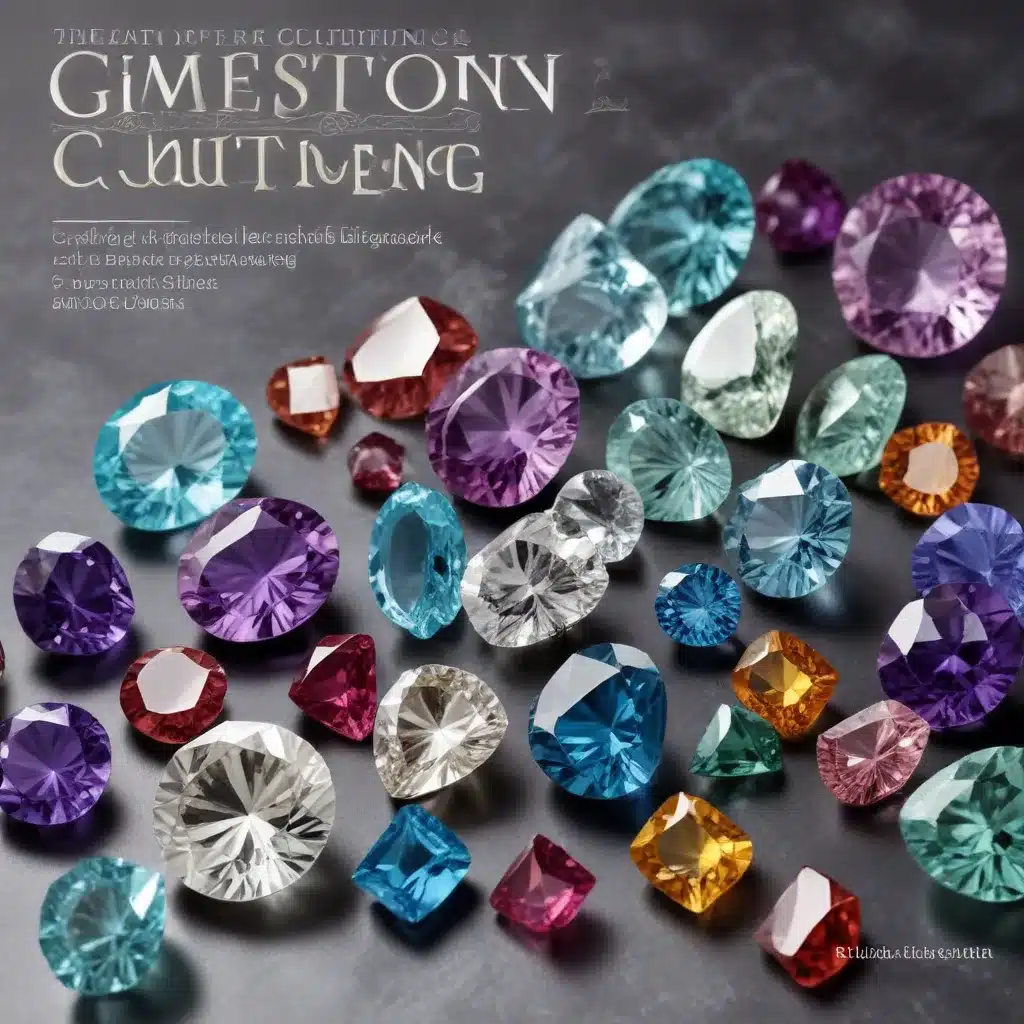
Gemstones have captivated humanity for millennia, their natural beauty and inherent rarity imbuing them with a singular allure. Yet, the true magic of these precious stones lies not solely in their raw form, but in the artistry and precision of the lapidary’s craft. Gemstone cutting, an ancient skill honed over centuries, transforms rough, unassuming minerals into dazzling jewels that captivate the senses and stir the imagination.
Unlocking Gemstone Brilliance
The journey from rough stone to sparkling gemstone is a delicate dance between the stone’s innate properties and the cutter’s keen eye and steady hand. Each step in the cutting process – from examining the rough to final polishing – requires meticulous attention to detail, a deep understanding of the gem’s physical and optical characteristics, and a artful vision to maximize its potential.
The process begins with the cutter’s initial inspection of the rough stone, assessing its size, shape, and potential flaws. This critical evaluation sets the stage for the subsequent steps, as the cutter must envision the final gem and determine the optimal cutting style to showcase its unique qualities.
Careful planning follows, where the cutter establishes the gem’s final proportions, considering factors such as color, clarity, and carat weight to create a harmonious and captivating design. Pre-shaping the rough stone lays the foundation, gradually revealing the gem’s outline and preparing it for the next, pivotal stage: faceting.
The Art of Faceting
Faceting is the heart of the cutting process, where the cutter’s skill and artistry truly shine. By grinding precise, flat surfaces onto the gem, the cutter creates a symphony of angles and planes that work in concert to refract and reflect light, unlocking the stone’s dazzling brilliance. This meticulous work requires unwavering focus, as each facet must be carefully aligned to optimize the gem’s fire, scintillation, and overall sparkle.
The brilliant cut, with its 58 precisely angled facets, is perhaps the most well-known and popular style, renowned for its ability to maximize a gem’s light performance. Designed to reflect the maximum amount of light, the brilliant cut endows the gem with a vibrant, luminous glow that has captivated jewelry enthusiasts for centuries.
In contrast, the step cut, with its clean, rectilinear facets, offers a more subdued and elegant approach, emphasizing the gem’s clarity and color over pure brilliance. This style is particularly favored for stones like emeralds, where the inherent beauty of the material takes precedence.
The mixed cut, a fusion of brilliant and step elements, allows cutters to tailor the final appearance to the specific gem, balancing sparkle and depth to create a truly unique and visually captivating result.
The Evolution of Cutting Styles
The art of gemstone cutting has evolved over time, with each era and culture contributing unique styles and techniques that have left an indelible mark on the industry. The rose cut, with its domed top and triangular facets, reflects the romance and nostalgia of bygone eras, while the old mine and old European cuts evoke the timeless elegance of the 18th and 19th centuries.
More recent innovations, such as the Barion cut and the princess cut, have introduced contemporary flair and enhanced light performance, appealing to modern sensibilities while preserving the timeless allure of fine jewelry. Each cutting style, from the vintage charm of the cushion cut to the architectural precision of the Asscher, offers a distinct aesthetic that allows gemstone enthusiasts to express their personal style and preferences.
The Science Behind the Sparkle
Beneath the captivating visual appeal of a perfectly cut gemstone lies a complex interplay of scientific principles. The gem’s refractive index, dispersion, and critical angle all play crucial roles in determining its ability to reflect and refract light, creating the mesmerizing brilliance that has enchanted onlookers for generations.
By understanding these fundamental optical properties, along with the gem’s Mohs hardness and toughness, cutters can make informed decisions about the optimal cutting style, proportions, and finishing touches to showcase each stone’s unique characteristics. This fusion of art and science is what elevates gemstone cutting from a mere technical skill to a true creative discipline.
Caring for Your Gemstone Treasures
Preserving the exquisite brilliance of a finely cut gemstone requires vigilant care and maintenance. Proper cleaning techniques, gentle handling, and safe storage practices are essential to ensure the longevity and continued sparkle of these precious gems.
Regular cleaning with a mild soap and water, or the use of specialized jewelry cleaners, can help remove accumulated dirt and oils without compromising the gem’s delicate surface. Equally important is the storage of gemstones in protective pouches or boxes, shielding them from scratches, impacts, and exposure to harsh chemicals or environments.
The Future of Gemstone Cutting
As the gemstone industry continues to evolve, driven by advancements in technology and changing consumer preferences, the art of cutting and polishing remains an integral part of the journey from raw material to stunning jewel. From the rise of synthetic gemstones and lab-grown diamonds to the increasing demand for personalized and ethically sourced gems, the role of the skilled lapidary remains essential in crafting pieces that captivate the senses and imbue each creation with a unique, lasting beauty.
Whether you’re a seasoned jewelry enthusiast or a novice exploring the world of fine gems, a deeper understanding of the intricate art of gemstone cutting can profoundly enhance your appreciation for the remarkable beauty and craftsmanship that goes into every sparkling jewel. So, let us continue to uncover the secrets behind the dazzling brilliance of these Earth-crafted treasures, for each gem has a story waiting to be told.

